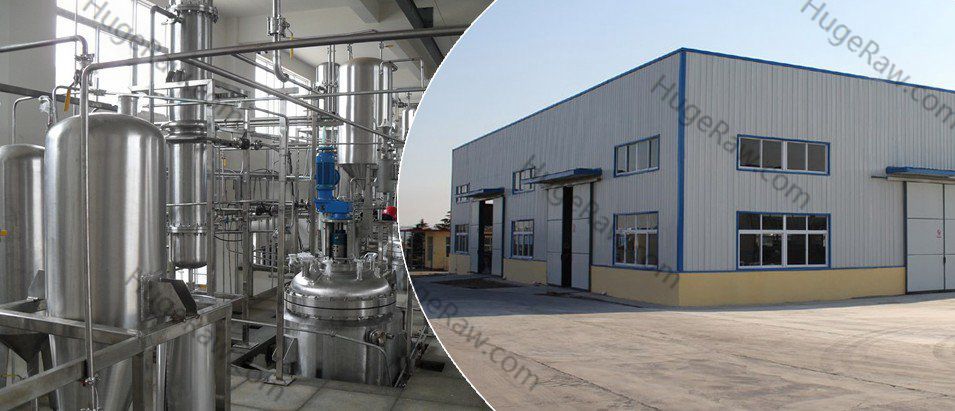- Tel:Payment:Bitcoin / WU/ Moneygram /Bank transfer
- Skype:live:hugeraw
- E-mail:
info@hugerawchem.com
info@hugeraw.com
- Adres:
6 Things You’ve Always Wanted to Know About Steroids
2018-06-11 17:08:226 Things You’ve Always Wanted to Know About Steroids
V
If you want to learn the facts about steroids–how they work, how effective they are, what kinds of side effects they cause, and more–read this article.
Some people say steroids are safe and awesome. Others say they cause permanent damage to your body and can even be deadly.
Many drug users swear they’re not addicted and can quit at any point. Others admit that life is just better on steroids and don’t plan on giving them up.
Many recreational bodybuilders often claim that steroids don’t make as big of a difference as everyone thinks. A quick look at professional fitness competitors suggests otherwise.
My point is there’s a lot of mystery surrounding steroid use and even more confusion. Like most things health and fitness, opinions are all over the place.
I assume you’re reading this article because you want to know things like how steroids work, how effective they are, their side effects, and how to know if someone is likely natural or “enhanced.”
Well, in this article we’re going to take an in-depth look at steroid use and touch on all of those points and more.
Before we start, I’d like to make my position on steroids clear:
I’m mostly (but not completely) anti-steroid, I’ve never used them and never will, and I think most people don’t need steroids to achieve their goals.
Keep that in mind as you read the first half of this article, which may give you a bit of a chub for doing at least a cycle or two of steroids. Get through the rest of the article before you run off to the juicehead in your local gym.
So, let’s start at the logical beginning: what are steroids, exactly?
What Are Steroids and How Do They Work?
When we say “steroid,” what we really mean is “anabolic steroid,” which is a man-made substance that has similar effects to testosterone in the body, including increased muscle growth and recovery, strength, and leanness.
Steroids accomplish this through various different mechanisms, but the net result is the same: protein synthesis rates are greatly increased or protein degradation ratesare greatly reduced or both, which results in rapid muscle growth. The mechanisms whereby body fat levels are reduced or suppressed vary from drug to drug and aren’t worth diving into here, but just know that’s part of the “package” that steroids deliver.
While testosterone itself is the best known steroid, there are many others that are quite popular among athletes and bodybuilders, like…
- Nandrolone
- Stanozolol
- Trenbolone
- Oxandrolone
- Deca Durabolin
- Dianabol
- Methandrostenolone
- Boldenone
- Oxymetholone
- Drostanolone
Why so many different types of drugs, you wonder?
Because each have unique profiles in terms of potency, toxicity, side effects, and synergism. They, and others, are combined in various ways to create different types of steroid “cycles” for different purposes and goals.
For example, if you were a competitive bodybuilder and wanted to add 20 pounds of muscle in your off season, your steroid cycle is going to be very different than when you’re cutting for a show and need to reduce body fat while preserving muscle and increasing muscle fullness, dryness, hardness, and separation.
How Effective Are Steroids?
Many steroid users would like you to believe that their superhuman bodies are more a result of hard work than drugs, but this just isn’t true.
Yes, it takes a lot of hard work to build a top-tier physique but it also takes a lot of drugs.
The reason for this is quite simple: you can only build so much muscle and get so lean naturally.
But before we talk about natural limits to muscle growth and fat loss, let’s take a brief look at the facts of how powerful steroids really are.
One study conducted by scientists at Maastricht University found that, during a period of ten weeks or less, the average muscle gains in people doing resistance training while on anabolic steroids ranged between 4 to 11 pounds. The most impressive amount of muscle growth researchers found was nearly 16 pounds of lean mass gained in just 6 weeks of weightlifting with steroids.
If those numbers don’t boggle your mind, consider this: the most accurate science-based models of natural muscle growth predict that men can gain no more than 20 to 25 pounds in their first year of weightlifting (and women can gain about half that).
Thus, with the right steroid cycle and training and diet regimen, you can do in just 2 to 4 months what would take a year to accomplish naturally.
Another bit of research that lends insight to the power of steroids was a case study conducted with an elite bodybuilder. He worked with scientists for a year, using steroids for all but four weeks of the duration. In that year, he gained about 15 pounds of muscle, which is about three to four times as much as someone natural with his level of training experience and conditioning could gain.
Another refutation of attempts to downplay the effectiveness of steroids is a studyconducted by researchers at the Charles R. Drew University of Medicine and Science.
43 men were randomly assigned to one of four groups: placebo with no exercise, testosterone with no exercise, exercise only, and testosterone with exercise. They were given a standardized diet to follow as well but it was self-reported, which isn’t ideal, but also doesn’t really matter given the results of the study.
The exercising subjects squatted and bench pressed three times per week for a total of twelve sets of six reps, with varying amounts of weights lifted in each workout. Muscle size was measured by MRI and strength was determined by actual one-rep maximums.
After ten weeks, here’s what happened:

No, that’s not an error.
The testosterone-only group gained more muscle than the guys weightlifting three times per week.
Some people will try to argue that what we’re really seeing here is increased water retention in the muscles registering as lean mass, but other research conducted by the same group clearly demonstrates that anabolic steroids increase muscle fiber growth.
Another thing to keep in mind is that study involved the use of 600 mg of testosterone per week, which is a moderate dosage by today’s standards. Many people are using multiple times that amount with multiple other drugs, and researchshows that the more anabolics you take, the more muscle you gain.
Muscle growth and strength aren’t the only benefits of steroid use–they also help keep you lean.
Research shows that testosterone directly inhibits the creation of fat cells, which helps explain why higher levels of testosterone are associated with lower levels of body fat, and lower levels of T with higher body fat percentages.
And, as I’ve mentioned, that’s just testosterone. Several other steroids also promote a leaner, more muscular physique and, when combined properly, are incredibly powerful in this regard.
The bottom line is steroids are incredibly effective at increasing muscle growth and strength and promoting leanness.
You don’t need steroids to build a great body, but they make it a much easier and faster process.
How Much Muscle Can You Build Naturally?
To better understand how much muscle we can ultimately build drug-free, let’s look at the research done on the correlation between fat-free mass index and natural and chemically enhanced bodybuilding.
First, a couple definitions.
Fat-free mass is everything in your body that doesn’t contain fat, such as muscle, bone, and water.
Fat-free mass index (FFMI) is a measurement of how muscular you are. It’s calculated by dividing your fat-free body mass in kilograms by your height in meters squared.
Now, the research.
A study conducted by scientists at McLean Hospital involved the analysis of 157 male athletes, including elite natural bodybuilders and strongmen. About half of the men had used steroids (with two-thirds of them having used steroids in the past year) and half had never used steroids at any point in their lives.
Here’s what researchers found:

As you can see, the average steroid user had an FFMI of about 25 whereas the average non-user was close to 22. The most muscular steroid-enhanced physique clocked in at about 32 and the best drug-free physique around 25.
Yep, the average steroid user was as muscular as the best of the natural athletes, and the best of the steroid group was about 50% more muscular than the average natty.
Now, let’s put some visuals to various FFMIs. I’ll start with myself.
I’m 6’2, I’ve never used steroids, and my FFMI is about 23. Here’s a recent picture of me at 188 pounds and about 7% body fat:
And here’s a picture of well-known fitness model and competitor Jaco De Bruyn:

Jaco’s 6’1 and competes at about 194 pounds (4 to 5% body fat), putting his FFMI around 25. Jaco says he doesn’t use steroids.
And here’s Phil Heath, the current Mr. Olympia:

Phil is 5’9 and weighs about 250 pounds on stage (4 to 5% body fat), making his FFMI about 35. Phil claim’s he’s natural too.
And, just for comparison’s sake, here’s a shot of the legendary Frank Zane, who has been open about his steroid use:

Frank is 5’9 and competed at about 185 pounds (4 to 5% body fat), pegging his FFMI at about 26 in his prime.
And here’s The Oak, who has also admitted to using steroids throughout his bodybuilding career:

Arnold is 6’2 and weighed about 235 pounds on stage (4 to 5% body fat), which gave him an FFMI of about 30.
So, as you can see, once your FFMI starts approaching 25, every uptick equates to a pretty significant change in terms of your overall physique. And in terms of how much muscle you can build as a natural weightlifter, it’s safe to assume that 25 is going to be your FFMI ceiling.
Another reliable way to determine your muscle growth potential is to use a simple formula devised by Martin Berkhan.
Here’s how it looks:
Height in centimeters – 100 = Upper weight limit in kilograms in contest shape (4-5% body fat)
And here’s how it plays out for a few heights and poundages:
HEIGHT |
WEIGHT AT 5% BODY FAT |
WEIGHT AT 10% BODY FAT |
TOTAL MUSCLE MASS |
|---|---|---|---|
5’8″ |
160 lbs |
170 lbs |
153 lbs |
5’10″ |
171 lbs |
180 lbs |
162 lbs |
6′ |
182 lbs |
192 lbs |
173 lbs |
To calculate numbers for other heights, multiply the inches by 2.54 to get centimeters. Then subtract 100 for your maximum weight in kilograms at 5% body fat. Multiply this number by 2.2 to get pounds.
According to this formula, the biggest I can get naturally would be about 194 pounds at 5% body fat. This would require that I add about 9 pounds of muscle to my frame, which I do believe would be doable over the course of the next 3 to 4 years. (Yes, building muscle after 5+ years of proper weightlifting is that slow.)
















